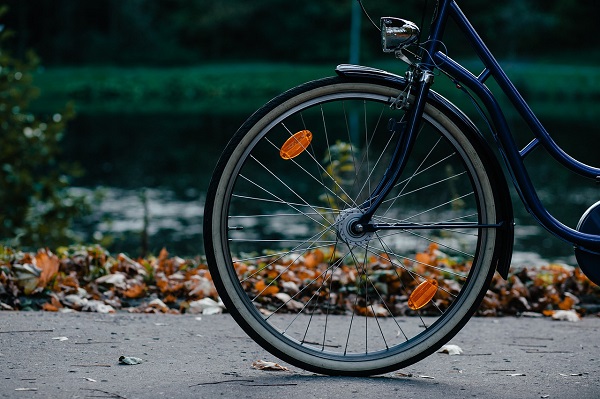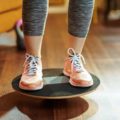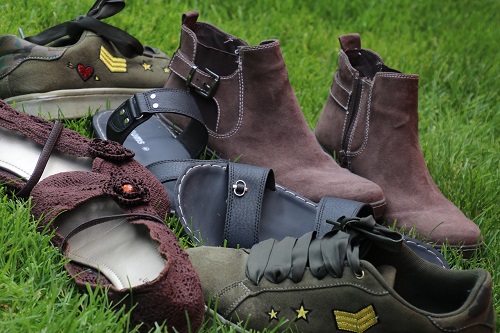Physical Activity and Your Foot Health
- How to protect your Feet during Physical Activity
- How to Be Active with Special Foot Issues
- Why is it important for your feet to be physically active every day?
- How much activity is required for long term health?
- Tips to build up your Activity Levels
How to protect Feet during Physical Activity
Weight bearing activity (the activity you do standing on your feet) can be or become very painful when you increase your activity levels. The best tips to protect your feet are:
- Choose correct footwear More info
- Start Easy Gradually build up the intensity and duration over time
- Manage activity session Preparing your muscles with slower movement and stretches will reduce the risk of injury.
- Choose the right activity Running a marathon in your first session may not be wise!
How to Be Active with Special Foot Issues
Foot issues which prevent activity in all age groups can be divided into 5 Areas
#1: Temporary Foot Pain
Some foot pain will respond to Correct Footwear, Start Easy and Manage Activity Session.
Some foot pain will require rest and then reintroduction to the activity at a Low level
Some foot pain will ease as muscle strength, tone and flexibity improve
Some foot pain will require professional intervention – Podiatrist, Doctor, Physical Therapist, Medication
#2. Intractable Foot pain and Activity
Some foot pain is intractable, that is, it just won’t go away. This type is the most frustrating for client and Health Professional. It may be caused by osseous, neurological or vascular changes. Despite 21st Century treatment options, the pain persists. Continued weight bearing activity may have a negative impact on the foot structures and generally are harmful to feelings of well-being. For these foot conditions non weightbearing or semi weight bearing activities although not ideal are preferable.Inexplicably, the pain may just slowly go away.
#3. Skin Integrity and Activity
Age, medical conditions and medication can damage skin and the fatty padding that protects the feet. Weight bearing activity and friction with shoes and socks can quickly cause blisters, skin tears or skin tissue breakdown resulting in wounds (ulcers) on the feet. Preventative measures are often very effective and should be managed and supervised by an appropriate health professional. A thorough foot check will ascertain if you are in this risk group. If at very high risk, semi or non-weightbearing activity may be necessary.
#4. Loss of Foot Sensation and Activity
Damage to the nerves or nerve pathways can cause a loss of sensation in the feet. The damage may prevent feelings of temperature, pain, touch, vibration or position awareness of the foot. In the case of walking or similar weight bearing activity if an injury has occurred, even just a blister, the injury may go unnoticed. Continuing the activity may worsen the injury beyond repair. Vigilance and supervision during and after activity is vital.
#5. Balance and Mobility issues and Activity
Unsteadiness and Falls are serious. Physical therapy, walking aids and appropriate footwear may be useful. Investigations to determine the cause of unsteadiness or a Fall is important. Examples of causes include brain changes, hearing defects and medication. Some are reversible. Seek professional advice.
What are examples of semi weight bearing non weightbearing activities?
- Cycling – especially indoor
- Swimming
- Water walking
- Chair activities
- Harness/weightless exercises
- Upper body weights
If you have any special Foot Issues it is strongly recommended that you have a thorough Foot Health Check before proceeding with full, semi or non weight bearing activity.
Why is it important for your feet to be physically active every day?
Activity every day can:
** Strengthen bones and muscle
** Increase flexibility of muscles, tendons and ligaments
** Increase blood flow
** Improve physical endurance and stamina
** Improve overall health
How much activity is required for long term health?
The generally accepted guidelines are:
Age 5-17 years A cumulative 60 minutes of moderate to vigorous activity daily
Age 18-64 years A cumulative 2-5 hours per week of moderate activities
Or 1-2 hours of vigorous (huff and puff) activities
Include muscle strengthening at least 2 days
Minimum activity session length – 10 mins
Age 65 years and older In essence the same as for the 18-64 years adults
Age 65 years and older with poor mobility 3 or more days per week to improve balance and prevent falls
Tips to build up your Activity Levels
- Easiest , cheapest activity is walking.
- Think about getting a pedometer and try to aim for 10,000 steps a day
- Add incidental walking – At work: use the stairs, not a lift, park the car further from the office. At home: learn to love vacuuming, or weeding the garden.
- At home Cleaning, gardening
- At work Walk when taking a phone call, use the stairs not the lift. Try not to sit too long – stand up for 10 minutes in every hour…(there are Apps for this)
- Be sociable Being Active in a group or with a friend always feels easier





